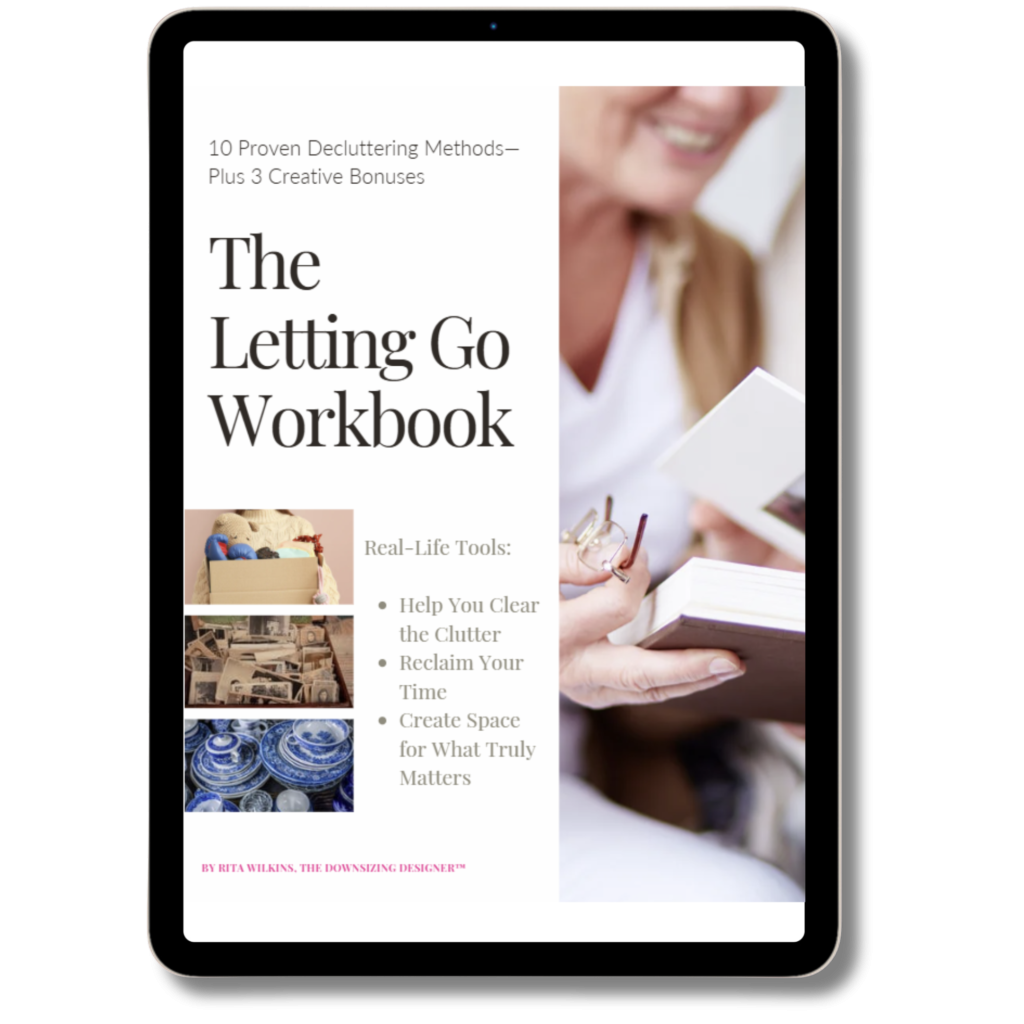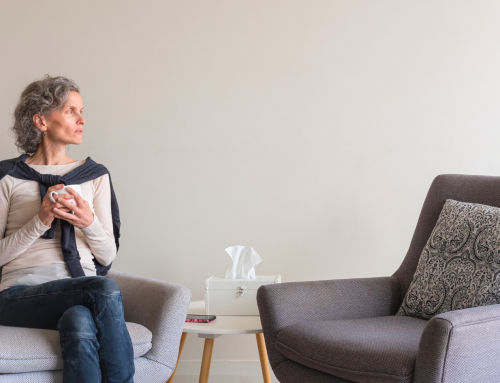This is a topic almost everyone can relate to when decluttering: what should you keep and what should you let go?
One of the biggest lessons I’ve learned on my own decluttering journey is this: decluttering isn’t about emptying your home, it’s about filling it with what truly matters.
Too often, we focus on what to let go of, but the real transformation comes when we learn to carefully and intentionally choose what we want to keep. Then, it doesn’t feel like a sacrifice… it feels like freedom.
A Christmas Ornament That Taught Me Everything
I still remember a small homemade Christmas ornament my son gave me when he was five years old. It wasn’t fancy or expensive, but it was filled with love.
A few years ago, when I was decluttering my holiday decorations, I almost let it go. But as I held it in my hand, something whispered, “This was made with so much love, and it brings me so much joy.” So I kept it.
Every December, when I hang that ornament on the tree, I’m reminded not only of his pride when he gave it to me, but also of the freedom that comes from choosing what truly matters.
Why We Hold On
It’s easy to hold on to things, isn’t it? That’s why we have so much clutter.
Some of it comes from:
- Guilt or obligation – gifts we received but never really liked or used.
- Fear – the belief that we’ll need something “someday,” so it stays tucked away in the basement.
But much of the clutter we hold on to isn’t just physical. It’s also emotional, such as:
- Unspoken words or unresolved conversations.
- Lingering anger or resentment we’ve yet to release.
Outer clutter mirrors inner clutter. Recognizing that connection is the first step toward being intentional about what to keep and what to release.
Remember, clutter isn’t just in our homes—it’s also in our hearts. Clearing space outside helps clear space inside.
Feeling in Control
One of the most empowering lessons I’ve learned is this: you are in control of your clutter.
Decluttering doesn’t have to be overwhelming if you approach it with intention. Start by asking yourself two simple questions each time you pick something up:
- Why am I holding on to this?
- Does it bring me joy, meaning, or usefulness?
Creating small rituals can also help you make mindful decisions:
- Hold an item in your hand.
- Reflect on its story, its meaning, or its usefulness.
- Decide intentionally if you want to keep it or let it go.
The goal isn’t to rush. It’s to curate and be selective about what earns a place in your life.
Keep what you use, love, and need. Let go of the rest and understand why you’re letting go. That’s what brings peace and freedom from regret.
What to Keep
Martha Stewart recently wrote a wonderful article about “11 Things to Keep When Decluttering,” including timeless household essentials.
It got me thinking. After years of helping others declutter and doing it myself, I’ve realized that the things most worth keeping aren’t always practical. They’re meaningful. They tell a story.
For example, I’ve kept a box of my Polish grandmother’s handwritten recipes. Every time I cook one of her dishes, I’m reminded not only of her love for food but also of her life in Poland as a young girl.
My “Keep It Rule”
- If it tells a story you still want to tell, it’s worth keeping.
- If it weighs you down or reminds you of a story you no longer want to tell, let it go.
What Not to Keep
This realization inspired my newest workbook, Letting Go: 10 Proven Decluttering Methods Plus 3 Bonus Methods.

Not everything deserves a place in your home. I’ve learned the hard way that some things simply take up space and energy.
Avoid keeping:
- Items kept out of guilt or obligation, such as family heirlooms you don’t want, need, or use.
- Items that never see the light of day because they’re stored in bins “just in case.”
- Items that no longer fit your lifestyle, like business suits from a past career.
For many years, I held onto my mother’s beautiful silver tea service. In her lifetime, she used it regularly when entertaining friends, but I never used it once. One day, I donated it to the senior center where I volunteer. They use it now, and knowing that brings me joy.
Avoiding Regret
A question I often hear from readers and viewers is, “How do I know I won’t regret letting it go?”
The answer is mindfulness and preparation. Take a pause before releasing something. If you decide to let it go, do so intentionally and with love.
Here are a few practices that help:
- Keep one or two meaningful items and give the rest to someone who will use them.
- Take photos of items that carry special memories.
- Write or record stories about why those items mattered to you.
- Discuss family heirlooms openly before giving them away to prevent misunderstandings or resentment.
When people feel included and respected, it strengthens connections and preserves family stories for generations to come.
Holiday Nostalgia and Memories
Holiday decorations often carry precious memories, but let’s be honest… many of them just take up space.
If you truly want to declutter your holiday décor this year, try these steps:
- Ask yourself: Is this item just taking up space, or does it tell a story worth remembering?
- Set clear physical limits for storage, such as one shelf or two bins, and stick to it.
- Take photos of what you’re letting go and create a digital memory album to revisit every year.
- Redefine how you celebrate by focusing on people and meaningful moments, not decorations.
As our lives change, so do our traditions. Your home may no longer be as full as it once was, and that’s okay. Holiday spirit doesn’t come from décor—it comes from connection and love.
Honoring the past doesn’t mean being buried in it.
The Legacy Lens
Decluttering isn’t only about letting go. It’s also about clarifying what you want to leave behind.
Every item you choose to keep tells a story about your values, your priorities, and your life. That’s why I often talk about what I call “The Legacy Lens.”
What’s Legacy-Worthy
Keep the things that tell your story:
- Personal letters, journals, and writings that capture your voice, humor, and wisdom.
- Symbols of your life’s passion and work, such as books, artwork, or creative projects that reflect your purpose. Keep the essence, not the excess.
- Memories you want to pass on, organized into legacy boxes or digital albums with notes explaining why each item matters.
Legacy is intentional. It’s the art of leaving behind meaning, not a mess. When the right items are kept, they bring joy to those who come after you.
A friend of mine created a family cookbook from her mother’s recipes. Another transformed her husband’s old shirts into a quilt for their son. One woman kept a single cherished ornament for her granddaughter to carry on their Christmas Eve tradition.
Memories live in our hearts, not in the boxes in our basement.
Keep What Matters, Release the Rest
Decluttering is a journey, not a checklist. I invite you to start curating your home and honoring your story. Choose what to keep with intention and let go with gratitude. That is where peace and freedom begin.
If you’d like to go deeper, I highly recommend two wonderful books:
- The Gentle Art of Swedish Death Cleaning by Margareta Magnusson
- Downsizing the Family Home: What to Save, What to Let Go by Marni Jameson
SHARE YOUR STORY!
Sign up for Rita’s FREE Newsletter HERE!
Never miss an episode! Click the following link to like Rita’s Facebook page or subscribe to her Decluttering YouTube Channel. Check out our YouTube playlists if you want to learn more.






